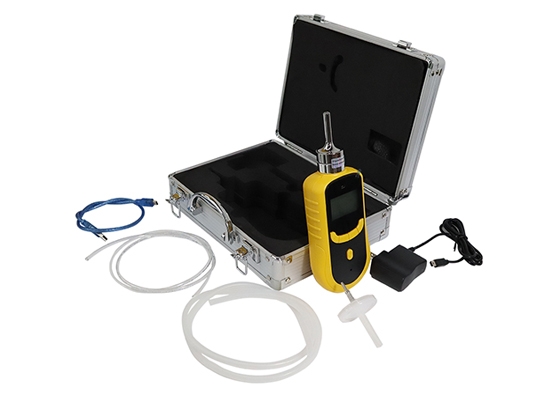Nitrogen is one of the main components, accounting for about three-quarters of the atmosphere and plays a vital role in ecosystems and human society on Earth. Not only is it an essential nutrient for plant growth, but it also plays a key role in several industrial processes. N2 is essential for everything from fertilizer production to food packaging to semiconductor manufacturing.
However, with the increase in industrialization and agricultural activities, excessive Nitrogen emissions have become a serious environmental and health problem. Excessive N2 emissions mainly come from activities such as agriculture, industry, and transportation, including Nitrogen Oxides (NOx) and Ammonia (NH3) release. These emissions form Ozone (O3) and acid rain in the atmosphere, negatively impacting vegetation and aquatic ecosystems. In addition, Nitrogen emissions are also related to the generation of fine particulate matter (PM2.5), causing harm to air quality and the human respiratory system.
In water bodies, excessive discharge of N2 may lead to eutrophication of water bodies, trigger blue-green algae blooms, and cause damage to aquatic ecosystems. At the same time, Nitrogen emissions may also form Nitrates, which can enter drinking water sources through groundwater, posing a potential threat to human health.

To solve the environmental and health problems caused by Nitrogen emissions, GD200-N2 portable Nitrogen detector has become an important monitoring device. This handheld gas monitor can not only be used flexibly in different scenarios, but also has real-time monitoring capabilities, providing more comprehensive and timely data for environmental monitoring. It allows people to quickly respond to potential environmental and health risks, helping to take targeted measures to reduce the impact of excessive N2 emissions.
Portable N2 Detector Working Principle
Gas Dog handheld Nitrogen detector is a small, flexible, and easily portable device designed to monitor N2 concentrations in the environment in real-time. These detection devices are based on electrochemical sensing technology. Electrochemical sensors measure concentration by detecting the chemical reaction between N2 gas and electrodes.
The working principle of the electrochemical sensor is based on the redox reaction between Nitrogen gas and electrodes. When Nitrogen molecules contact the working electrode surface, a redox reaction occurs, resulting in the movement of charges. The degree of this charge movement is proportional to the N2 concentration, and the Nitrogen concentration is ultimately determined by measuring changes in current.
Electrochemical sensors generally have high sensitivity and can detect N2 concentrations as low as ppm (parts per million) levels. Its response time is also relatively fast, allowing the personal N2 gas detector to respond quickly to changes in Nitrogen concentration in the environment.
GasDog industrial gas detector can monitor N2 in real time. The real-time nature of electrochemical sensing technology allows users to quickly obtain accurate data on N2 concentration, thereby taking necessary measures promptly to reduce potential environmental and health risks.
Gas Dog Portable Gas Detector Advantages

- Small and lightweight design: Gas Dog portable gas detector is small and lightweight. Users can easily carry it to different workplaces for real-time Nitrogen concentration monitoring.
- Real-time monitoring capability: This handheld N2 detector has real-time monitoring capability and can quickly respond to changes in Nitrogen concentration. This is critical to promptly identifying and addressing potential risks in the environment or workplace.
- Easy-to-use interface: Portable single gas detector is designed with an intuitive and simple user interface, allowing users to easily operate the device and interpret data. This is particularly important for users in different areas, including non-professionals and field workers.
- Durability and stability: Single gas detectors are highly durable and stable, making them ideal for use in a wide variety of industrial, agricultural and scientific fields. They perform their tasks reliably, ensuring continuous effective gas monitoring and detection.
- Data logging and export capabilities: Gas detectors and monitors have data logging and export capabilities, allowing users to save and analyze historical data. This facilitates long-term monitoring and trend analysis and is of great significance for formulating long-term environmental protection strategies or quality control plans.
Nitrogen Detector Applications in Various Fields
Nitrogen gas detectors play a vital role in safeguarding human health and environmental well-being across diverse industries. These essential devices are designed to continuously monitor air quality, promptly detecting the presence of N2 and triggering timely alerts to mitigate potential risks. The applications of N2 gas detectors extend to various sectors:
- Environmental protection and monitoring: Portable Nitrogen monitors play a vital role in environmental monitoring. They are widely used to measure N2 concentrations in the atmosphere, helping to monitor air quality and assess the impact of N2 on the environment. Real-time monitoring data allows environmental protection departments to take quick action to protect natural ecosystems.
- Industrial safety and production control: In the industrial sector, portable N2 detectors play a key role in real-time monitoring of Nitrogen concentrations in work environments. They can be used to detect Nitrogen produced during industrial processes and ensure it is at safe levels. This helps protect workers' health and production safety.
- Precision fertilization in the agricultural field: In agricultural production, handheld Nitrogen detectors are used to monitor the N2 content in the soil, providing farmers with tools for precise fertilization. By monitoring N2 levels in the soil in real time, farmers can more effectively manage crop growth, increase yields and reduce negative impacts on the environment.
- Scientific research experiments and education: Single N2 gas monitors also play an important role in scientific research experiments and education training. Scientific researchers can use these instruments in field studies, while educational institutions can use them to conduct environmental science experiments and training to develop students' field monitoring skills.
- Indoor air quality management: In homes, confined spaces, and other indoor environments, they help monitor Nitrogen concentrations in indoor air. This is critical for assessing indoor air quality, ensuring people's health and improving work productivity.
- Safety monitoring in the medical and health field: In medical environments, such as operating rooms and laboratories, portable Nitrogen detectors can be used to monitor N2 concentrations to ensure the safety of medical staff and patients. This is essential to guard against potential dangers.
- Air management in the aerospace industry: In the aerospace industry, handheld N2 monitors are used to detect Nitrogen concentrations inside aircraft to ensure the safety of astronauts during space missions.
